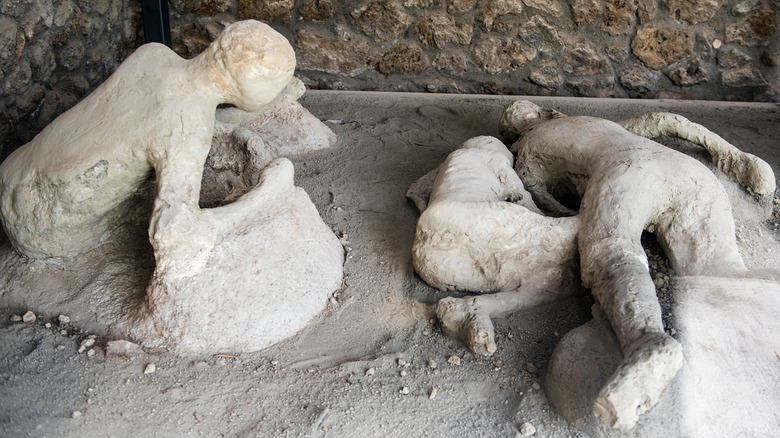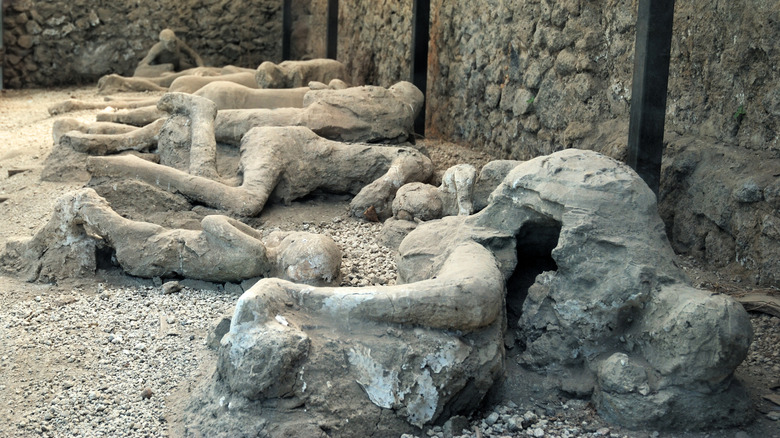DNA Tests Revealed That Pompeii Victims Aren't Who Historians Thought
Many people in the Roman city of Pompeii were buried under a layer of ash and volcanic rock in 79 A.D. when Mount Vesuvius erupted. It was one of the most catastrophic events in the history of volcanology. Those who survived at first died in pyroclastic flows — hot mixtures of ash, gas, and rock fragments that rapidly pour from collapsing flow fronts or vents. As a result, they were encased in compact ash, which preserved their forms. Researchers and historians hypothesized tragic stories around those casts, but new genetic research has challenged those narratives.
Published in Current Biology, a study of ancient nuclear and mitochondrial DNA found in 14 of the 86 iconic Pompeii casts has allowed scientists to more accurately establish who the volcano's victims were, including their sex, genetic relationships, and trace ancestry. "For example, in the House of the Golden Bracelet ... the four people traditionally thought to be the two parents and their children actually have no genetic ties to each other," said University of Florence's Department of Anthropology professor David Caramelli in a press release. Harvard University professor of human evolutionary biology David Reich explained that the "adult wearing a golden bracelet and holding a child" has long been interpreted as a mother and a child but is actually an unrelated adult male and boy.
"Similarly, a pair of individuals thought to be sisters, or mother and daughter, were found to include at least one genetic male," Reich added. This statement is a reference to the two people found in an embrace in what was dubbed the House of the Cryptoporticus.
Implications of Pompeii DNA analysis on ancestry and future research
Along with overturning several narratives of who Vesuvius' victims were, the characteristics of DNA and the genetic testing on the Pompeii casts stand to rewrite what we know about their ancestry and cosmopolitan nature. The researchers have already found that Pompeiians had diverse backgrounds, "reflecting broader patterns of mobility and cultural exchange in the Roman Empire," according to Max Planck Institute for Evolutionary Anthropology's Alissa Mittnik (via Università degli Studi di Firenze).
Eastern Mediterranean immigrants, for instance, accounted for a significant portion of the Roman city's population. Caramelli says, "The combined use of genetic data and other bioarchaeological methods provides us with the chance to better comprehend the lives and habits of the victims of the Vesuvius eruption" (via Max-Planck-Gesellschaft). University of Cambridge Professor Andrew Wallace-Hadrill, who wasn't involved in the research, told The Guardian, "It is very interesting for instance that they have identified an individual with dark skin and black hair, which strongly points to an enslaved person from Africa."
Additionally, using DNA extraction and analysis has "significant implications for the interpretation of archaeological data and the understanding of ancient societies," said Mittnik. She explained that this study highlights how easy it is to draw incorrect conclusions about historical narratives, but using both genetic data and archaeological records can help to combat that. Pompeii Park Director Gabriel Zuchtriegel added that animal DNA analysis has remained part of their study protocols and that the site itself has a vital role in pushing archaeology and research forward.

